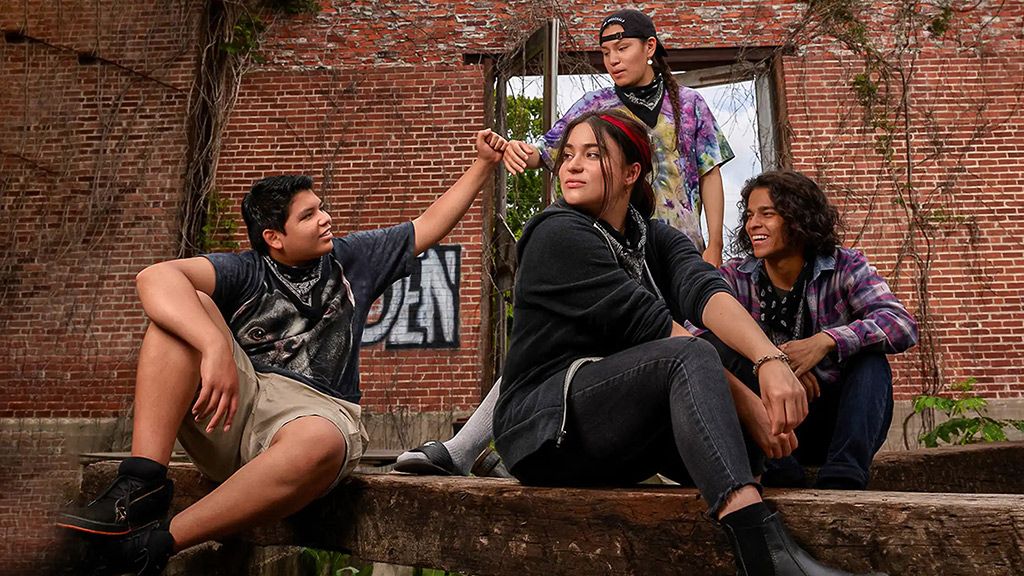
Our New Values
Contributor
-
 Apryl Deel-McKenzie
Apryl Deel-McKenzie
Earlier this year, we redesigned our organizational values. (You can find them here.) We love how clear, concise, and shiny they look when they’re listed together on our website. Our process for getting to the final product–brainstorming, writing, editing, sending frustrated Slack giphys, more editing–looked quite different (definitely less clear and less shiny). We hope that by sharing a little bit about our path, you’ll feel inspired to outline or update your own values, or at the very least, further appreciate the brave souls who undergo organizational values creation. We’re also excited to tell you more about how our new values show up in our work and what we’re doing to hold ourselves accountable to them.
How It Started

Why did we initially decide to redesign our values? To put it simply, our existing set of values felt stale. They were created before most of our staff joined the team and before a period of significant organizational growth. No one actively used or referenced them. We were also about to undergo strategic planning as an organization, so realigning our values during this time felt like a natural fit. And finally, we realized that we talked (and continue to talk) a lot about Indigenous values in our programming, but we hadn’t meaningfully defined our own values as an Indigenous-led organization. We wanted to change that. We hoped to create a set of values that would guide our work as a team, help us hold ourselves accountable, encourage personal and organizational growth, and let our stakeholders know what to expect when working with us.
We launched our values redesign work–a consensus-based process that ultimately took many months–with a simple brainstorming exercise. We asked staff to identify the values they felt currently existed in our work (written and unwritten) and would help us best carry out our mission. From there, we collectively clarified, condensed, and reduced this long list until we pinpointed five values that defined our organizational culture.
The hardest part of the whole values creation process? Developing concise and accurate definitions. After finalizing our five values, we assigned the task of defining them to a small wordsmithing group. What started out as one meeting became several. Many “headdesk” giphys were shared and final final sentences changed. After expressing deep regrets about volunteering for the committee in the first place, the wordsmithing team finally emerged with a set of draft definitions that made them proud and felt like a fit.
From there, our full team reviewed the defined values, made a few small tweaks, and ultimately approved them. We now had values that resonated with our staff. The hard work was over. Or was it?
How It’s Going

It most certainly wasn’t. We felt so inspired by what an organization called Code2040 did with their values, that we decided to copy them. We underwent a new process of outlining what it’d look like when we are successfully implementing our values (actionable behaviors). We know that we’re not perfect and bound to make mistakes, so we also detailed what we might see when we ignore our values (signs of challenge).
Here are some sample actionable behaviors and signs of challenge for our “Be a Good Relative” value:
Be a Good Relative: Being good relatives is foundational for how we work. We build kinship through trust, mutual respect, and mindful listening.
Actionable behaviors:
- We seek to understand our relatives by asking questions and honoring different viewpoints and life experiences.
- We practice a growth mindset and actively exchange knowledge.
Signs of challenge:
- We break our promises, stated and implied, to one another.
- We have difficulty showing compassion, empathy, and grace.
Having our list of actionable behaviors and signs of challenge helps strengthen team accountability and gives us a common language to use when we need to call ourselves (or each other) in for not using our values. Aside from our list, we’ve implemented new organizational systems to help keep our values at top of mind, such as values-based team check-ins and decision making processes. We’re still in the early stages of integrating values accountability into our work; we know this will be an ongoing process.
We’ve enjoyed looking for ways that our values show up in our work. For example, we’ve incorporated our “be a good relative” value into our hiring process by prioritizing transparency and offering quality, growth-minded feedback to applicants. We embraced fun, unapologetically during our recent Give to the Max Day campaign by giving donors the chance to see our executive director jump into a very cold stock tank wearing a flower hat when we met our fundraising goal.
This journey has also prompted us to consider how organizational values compare to Indigenous values. Native Governance Center program manager Apryl Deel-McKenzie explains, “In some ways, having values is inherently Indigenous. I think about Diné concepts and the teaching of hózhǫ́ and how we strive to live this way, for example. We should also be careful in directly comparing organizational values with the practice of Indigenous values because there’s a deep sacredness to Indigenous values. They come from our ancestors, ceremonies, prayer, and creation stories, whereas our organizational values don’t. It doesn’t make them not important; it just makes them different from the core sacred values of Indigenous Peoples.”
Both our organizational values and our Indigenous values guide our work in the community. (To get really meta, our “center Indigeneity” organizational value reminds us to center Indigenous values in everything we do.) While our values creation journey was long and challenging at times, we’re grateful for our new shared language and excited to see where it takes us in the future.